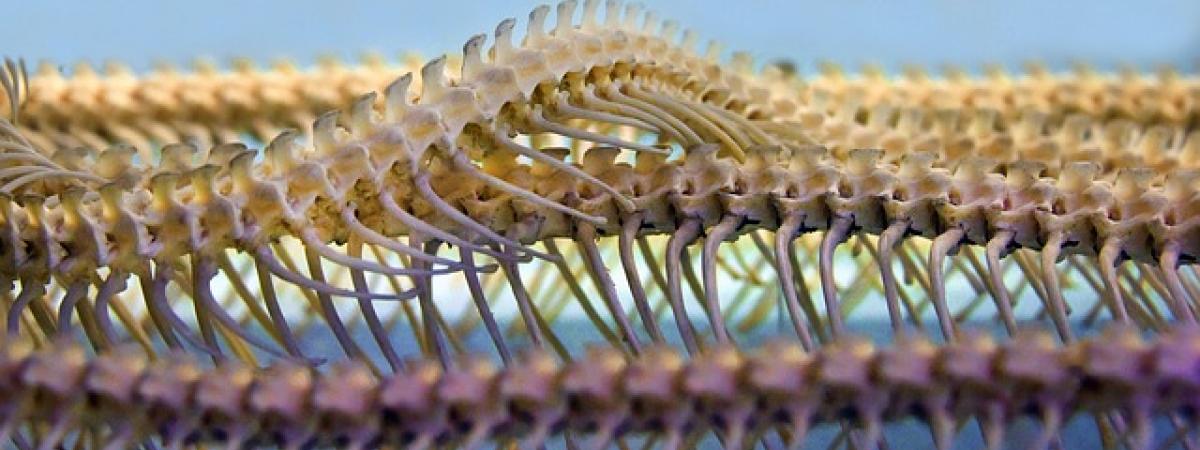10 things you didn't know about your spine

Hippocrates, the father of modern medicine said; “It is most necessary to know the nature of the spine”. With its amazing design, essential functions and the serious consequences when it’s damaged or diseased, he couldn’t have been more correct.
1. The bones in your spine serve two important functions
The adult spine consists of 26 bones: 24 vertebrae, the sacrum (near the bottom) and coccyx (at the end).
The bones provide a column of support, bearing the weight of the head, neck and trunk and allowing us to maintain an upright position, whether standing or sitting.
Your spine is upright but surprisingly not straight. There are in fact four curves to the spine to prevent us from toppling forward.
Pregnancy can distort the lower curve, leading to back pain. Africans carrying water on their heads maintain the curvature of the spine and so avoid back-strain.
2. The bones also protect the spinal cord
The spinal cord: “We humans have been digital for years”.
These are the words of Professor Frances Ashcroft as she describes the impulses sent in digital code along the nerve fibres of the spinal cord. The fibres ascending the spinal cord carry sensory information to the brain from skin, joints and muscles; the descending fibres carry instructions to move the muscles.
The human body has about 10 million sensory neurones and half a million motor neurones.
Other fibres in the spinal cord form the autonomic nervous system, controlling functions such as heart rate and digestion.
3. A lot can go wrong with the spine
It can bend the wrong way, such as in scoliosis, kyphosis or lordosis, it can be severed in spinal cord injury, the nerves can lose their covering in multiple sclerosis, tumours can compress the nerves and infection and abscesses can form.
4. The cervical (neck) spine allows amazing movement of the head
“Your head is relatively massive. It sits atop the spinal vertebrae like a soup bowl on the tip of a finger” according to Dr Martini of Cornell University.
Connections between the top vertebra and the skull allow us to nod and look upward and downward. Connections between the top and second vertebrae allow us to move our head from side to side: a clever piece of engineering indeed.
5. A cross section of the spinal cord shows a grey butterfly structure on a white background
The central grey part consists of the cell bodies of the nerves: the control centres where the DNA is stored.
The surrounding white part contains the fine branches of the nerve cell that can stretch from the brain to your fingertips. Nerve cells are the longest cells in your body and many are up to a metre in length.
6. You don’t have a tail
The bottom bone of the spine (the coccyx) is sometimes called the tailbone. It’s not a tail, but instead an important anchoring point for many ligaments and muscles of the pelvis.
If you fall and damage the coccyx, it’s hard to walk. The name coccyx is derived from cuckoo as the bone is shaped like a cuckoo’s beak.
7. Your spine is in constant communication with the brain
This is most clearly demonstrated when the connection is lost in spinal cord injury.
Christopher Reeves suffered a cut across his spinal cord below the first vertebra, losing all sensation and movement below the neck.
8. You are taller in the morning… and in space
A lack of gravity pulling the vertebrae close together means that astronauts can grow 5cm taller in space and you are 1cm taller in the morning.
NASA is studying further effects of microgravity on the length of the spine.
9. What’s a spinal tap?
In this case, nothing to do with rock music. Your spinal cord is surrounded by clear fluid to cushion it from injury.
Withdrawal of this fluid using a needle is called a spinal tap or lumbar puncture. It can help diagnose infection and treat headaches.
10. The spine in art and mythology
The vertebra at the top of the spine is called Atlas. It is named after Atlas who, in Greek mythology, holds the world on his shoulders: just as this bone holds the head up high.
A hidden image of the spinal cord is thought to have been depicted by Michelangelo, in his painting on the ceiling of the Sistine Chapel in Rome.
